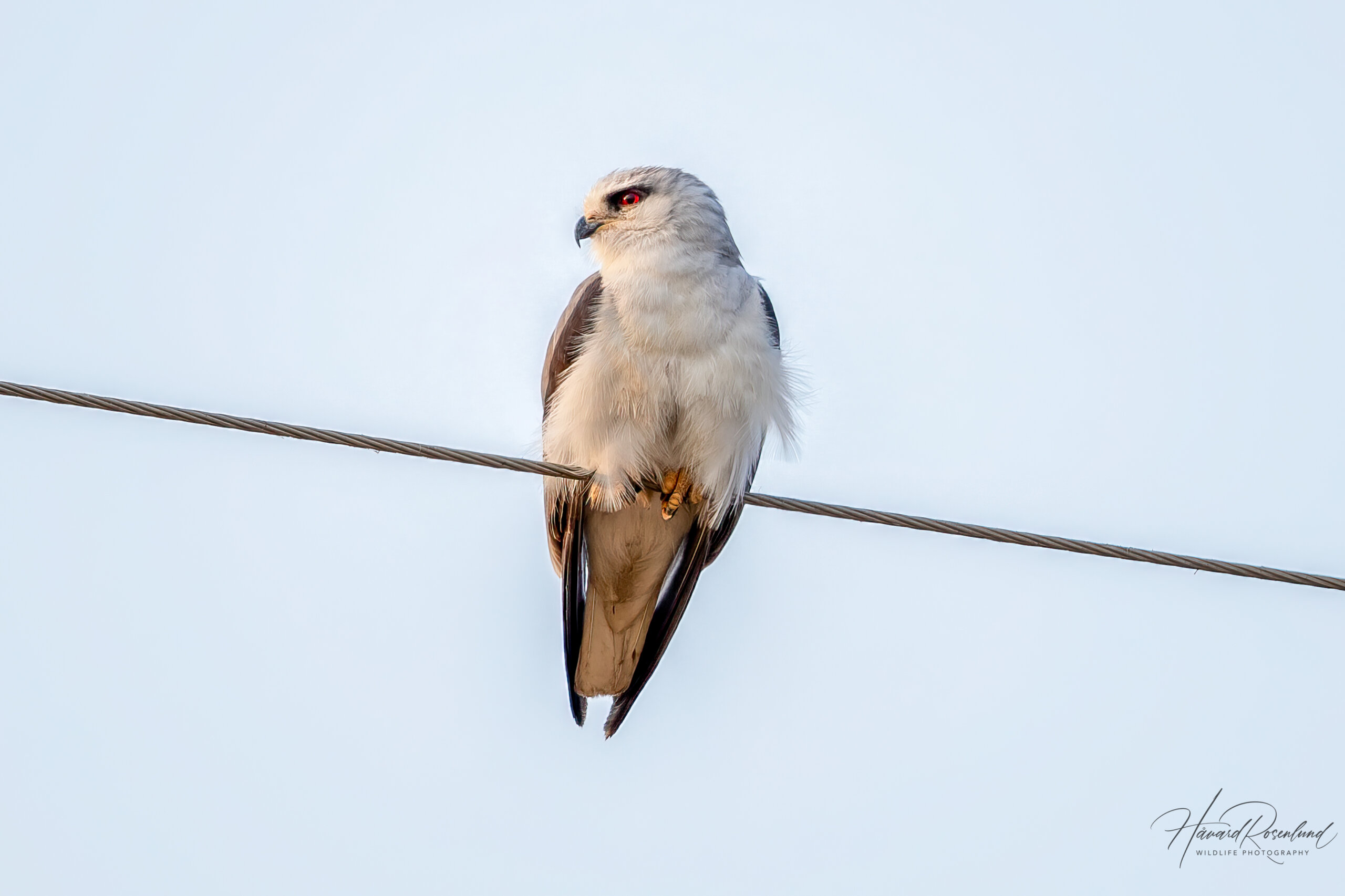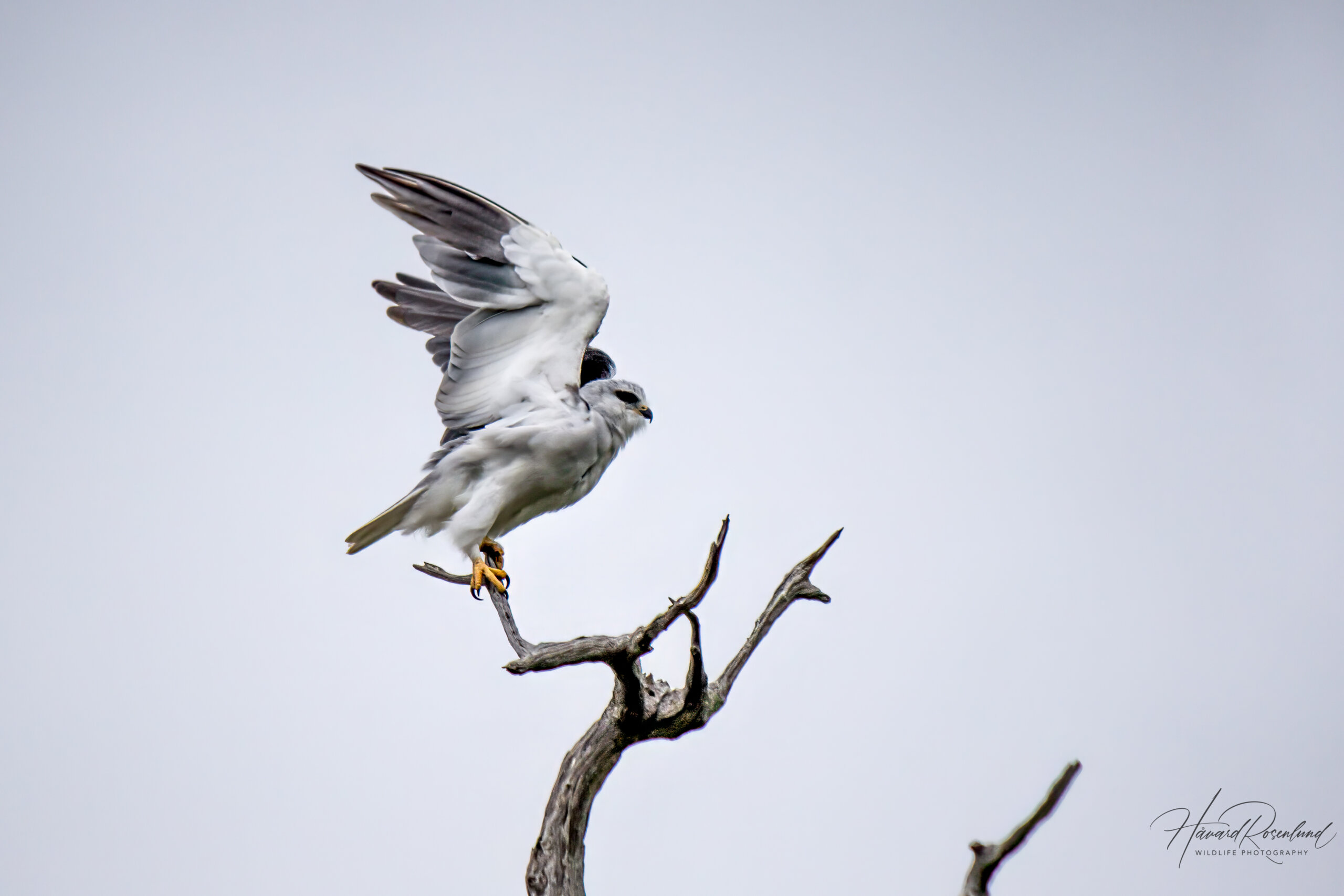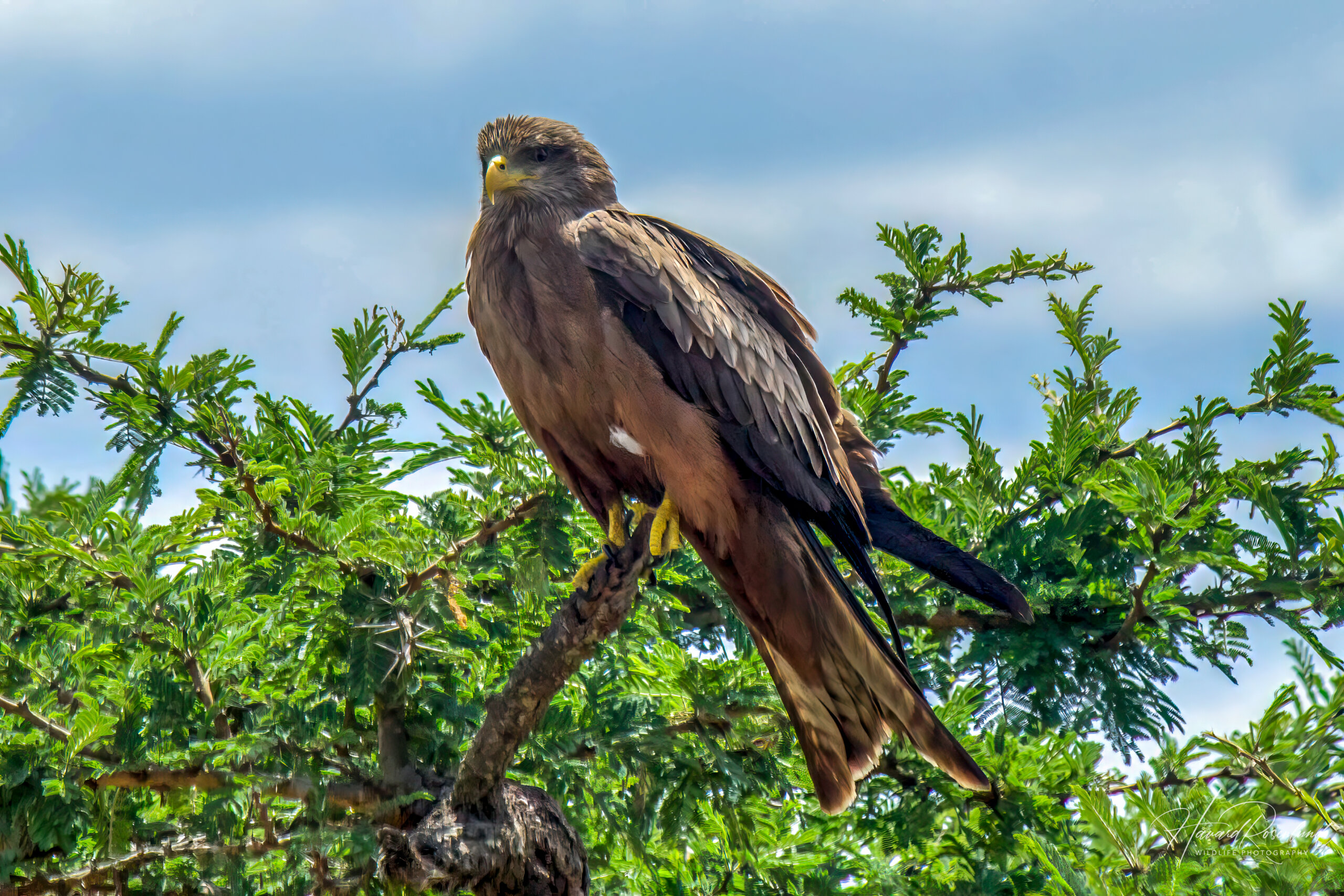Description
The black-winged kite (Elanus caeruleus) is part of a superspecies that includes the Australian black-shouldered kite (Elanus axillaris) and the white-tailed kite (Elanus leucurus) found in the Americas. These are all very similar species, and was at one point thought to be the same species. The black-winged kite is still commonly known as the black-shouldered kite in many areas within its range. These kites, belonging to the elanine kites, are not really related to other kinds of kites.
The black-winged kite is a small bird of prey common in sub-Saharan Africa and tropical Asia. It reaches a length of 35-38 cm (13.8-15 in) and a wingspan of 80-95 cm (2 ft 7 in to 3 ft 1 in). In contrast to the kite species in the Milvus genus, its tail is not forked. Plumage is white on the underparts and head, whereas the upperparts and wings are grey. Eyes are bright red in a face that can be described as owl-like. Eye line, shoulders, and wing tips are black. In flight the bird is often identified as having a gull-like appearance. Juveniles are similar to adults but have browner upperparts.
Hunting, diet & habitat
The black-winged kite is mostly found in open habitats and prefer savanna, grasslands, and semi-desert. It can also be seen at forest edges and clearings. It is often seen hovering at one spot in the open while looking for prey, a behavior usually observed in the smaller kestrels. It also enjoys scanning for prey from an open perch, such as a dead tree or a telephone pole. When a prey is identified, it will swoop down and catch it on the ground. Diet is broad, but small rodents seem to be the most common prey. Birds, lizards, snakes, and amphibians are also caught frequently. It has also been known to catch large insect and bats in mid-air.
Nesting
Black-winged kites are resident or nomadic, depending on the region, with individuals experiencing more prominent seasonal changes being more prone to travel. Breeding season also changes with geographical location. The nest is a small platform made of sticks and twigs and is constructed by both parents. It is most often situated high up in the canopy of a tree, but sometimes man-made objects such as poles and pylons are used. The female lays 2-6 eggs, which are incubated by her for 30-33 days. She broods the chicks for the first 14 days after hatching while the male provides food. The chicks take their first flight after 33-37 days but will stay dependent on the parents for another 42-70 days.
Status
The black-winged kite is a common bird of prey with a massive geographical range. In contrast to many other species of birds of prey, the black-winged kite seems to have benefited from the increase in agricultural land and plantations, and its range seems to be increasing with populations expanding into South-West Europe and West Asia. It is listed as least concern on the IUCN Red List.









